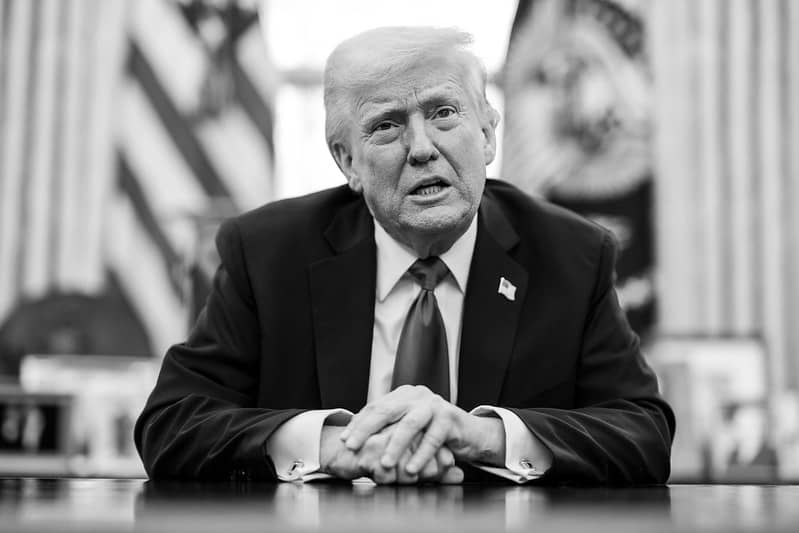
Official White House image.
Tariff risks for the EUR are underappreciated.
Barclays maintains a bullish forecast on the Pound-to-Euro exchange rate and expects the pair to rise into the 1.20s, helped by UK resilience to U.S. tariffs.
The UK high street lender and investment bank says, "we retain our bullish view on the pound... in the coming quarters."
"The UK's greater resilience to direct tariffs than the eurozone is a central tenet of our view," says analysts in a note released just days before the U.S. announces a significant package of tariffs.
Other investment banks have lowered their forecast targets for Pound-Euro in March, and the decision by Barclays to sit tight ensures its point targets are amongst the most bullish in the investment bank universe.
(The forecasts can be viewed on request here).
We recently reported that Goldman Sachs had opted to cut its projections on account of expectations of a Eurozone economic recovery linked to new German spending and investment plans.
But Barclays argues the April 02 tariff announcements mark an escalation in the trade war, the impact of which is not yet fully appreciated by foreign exchange markets.
"Not only is this not priced in, it could also be worth up to 5% in EURGBP, according to our estimates," says Barclays, adding that for Europe, "trade risks outweigh fiscal expansion in the near term."
"The potential growth hit from tariffs largely outscales the near-term benefits from fiscal expansion, which also carries execution risk," says the bank, referencing the potential negative impacts for the Euro.
On the domestic front, a growth pick-up is underway following a "soft patch" that followed last October's tax-heavy budget.
"Demand-side data have also stabilised anew," says Barclays.
Retail sales volumes climbed 1.0% in February 2025, following an upwardly revised 1.4% increase in January, said the ONS in March. This exceeded the consensus expectation of -0.4%.
"Retail sales continue their rebound after the Budget knocked confidence for a couple of months. Retail sales volumes have been trending up pretty solidly since late-2023 and 3m year-over-year growth reached the highest since March 2022. GDP growth will rebound in Q1," says Rob Wood, Chief UK Economist at Pantheon Macroeconomics.
Barclays says the domestic data pulse should prevent the Bank of England from rapidly lowering interest rates, which will underpin the Pound's carry advantage over the Euro.
"Alongside still-elevated wage growth and services inflation, the BOE's cutting cycle is set to remain slow and fairly shallow, which in turn implies a sticky carry advantage for the pound," analysts explain.
Carry refers to the flow of capital from low interest rate environments to high interest rate environments. The Bank of England's base rate is higher than that of the European Central Bank, which underpins UK bond yields relative to those of the Eurozone, driving capital flows in favour of GBP.
The investment bank also maintains a long-held view that structural improvements for the UK supply side from closer EU-UK ties remain in scope under the Labour government.
The Barclays forecasts can be viewed alongside those of other major investment banks, including Goldman Sachs and Bank of America, here.
